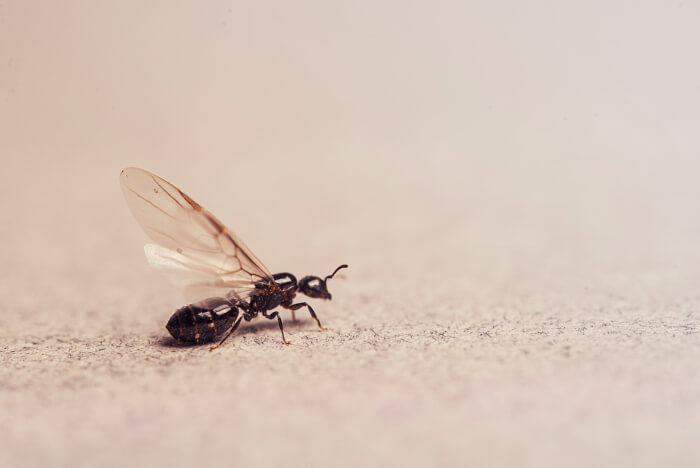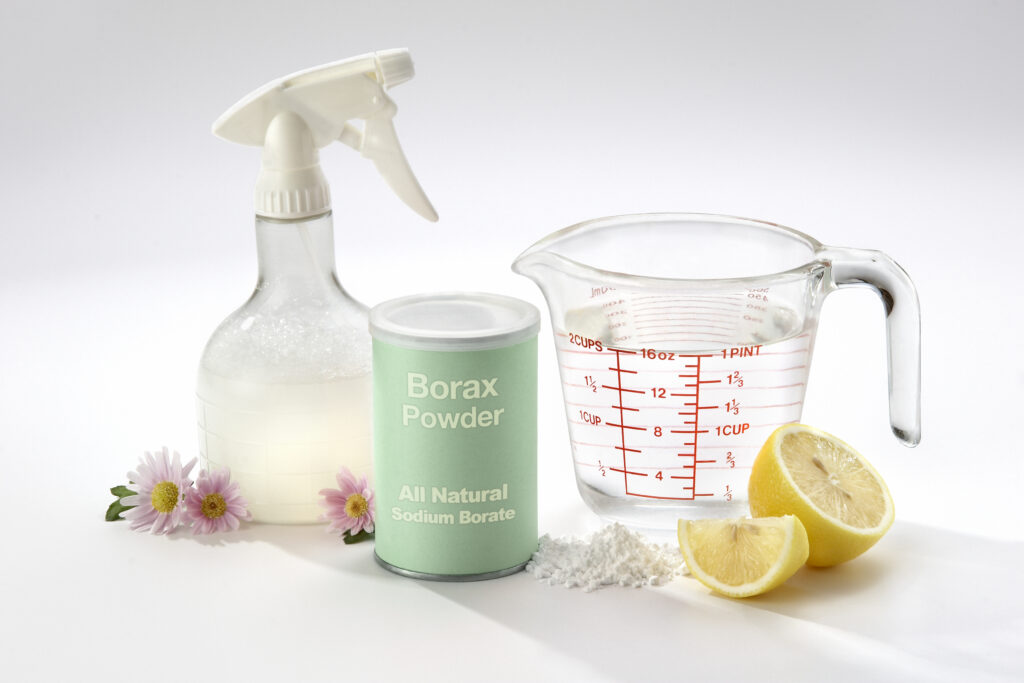


It’s bad enough to deal with a regular ant infestation at home, and it gets even worse when it’s a flying ant infestation. Many of us are used to seeing ants on the ground, so seeing a winged ant can be a little surprising. But that doesn’t mean we can’t get rid of them.
So how do you get rid of flying ants in your home? You may opt for a vacuum or a bug zapper, but the former doesn’t exactly kill them, while the latter is only advisable when killing the last few. One of the most effective ways is to make flying ant bait with sugar and borax.
Before we dive into getting rid of flying ants, let’s first understand what we’re dealing with.
Ants are not like humans who think as individuals. When the colony has needs, the ants collectively work to meet them because they’re eusocial insects who follow swarm intelligence. Swarm intelligence suggests that insects like ants are administered by collective intelligence instead of individual intelligence.
When swarming season starts, the colony produces winged ants to search for a place to start another colony and mate. These insects are mostly male (drones), but the ant colony will also produce female flying ants (queens) to mate with the males.
When it’s time to swarm, the ants prioritize mating. When they’ve finished mating, they’ll seek a new location to start a colony. The female flying ant’s, or queen ant’s, wings fall off as she prepares to lay eggs. The drones then die as they’ve already fulfilled their purpose.
Swarms are most common during the spring or fall, but an indoor swarm is usually not confined to those seasons because insects normally swarm in response to temperature. If there are swarming ants in your home, you likely have a full-scale colony since an insect like an ant rarely travels as a full swarm from outside to inside.
You can say that flying ants are winged reproductives because these ants are just the reproductive version of regular ants. They’re reproductive ants, and their wings allow drones and queens to leave their old nest swiftly and mate in the air. The queen will then leave to find a new location to make a new colony.
If you’re curious whether a flying ant can damage your home, here’s some good news for you: Flying ants are generally harmless. Their only purpose is to mate and find a new place to nest. However, ants in general, especially when in a swarm, can cause occasional damage (though a termite infestation would still be worse). A carpenter ant infestation can cause wood damage over time.
Just like regular ants, flying ants are attracted to sugar and food. They can also be attracted to lights as well because insects depend on natural light like the sun and moon to orient themselves.
Biting ants may still bite when in their winged form. On the other hand, ants like fire ants are unlikely to sting when they’re winged because most of them are male ants who have no stingers.

Like in any pest or ant problem, it’s important that we thoroughly understand each step of getting rid of flying ants. Here are some steps you can follow:
You first have to make sure that what you’re dealing with is actually flying ants. Be sure not to confuse a flying ant with a flying termite or winged termite. Here are some flying ant characteristics:
The drone or the male ant doesn’t live that long because their only job is to mate. Queen ants are also not likely to create a second colony in the same house — unless your home is quite large. However, it’s still best to kill what you can to be certain, especially since there’s still a chance for them to make a second colony.
We suggest using a flying ant bait, which we’ll further discuss later. You could also try using a vacuum to suck them up. Just take note that the vacuum itself doesn’t kill them, so be sure to remove the vacuum bag from your home and wait a few days before you empty it. This will allow the ants inside it to die.
You could also try using a bug zapper for these pests, but it’s only best for killing the last few. We don’t recommend this for killing whole swarms.
Certain ant species like the winged carpenter ant can cause damage in a home, but in general, ants are more of a nuisance than a threat.
Note that flying ants are not a specific species of ant, so you may encounter a winged Argentine ant, a winged pavement ant, a winged pharaoh ant, or a winged black carpenter ant (Camponotus pennsylvanicus). There are also certain types of ant that infest homes, with the odorous house ant and carpenter ant being the most common.
Regardless of the ant species that you’re dealing with, it’s best to kill the source. Some of the common places in your home where you may find an ant colony are:
It’s not easy dealing with a flying insect, especially when they’re foraging ants with wings. When things get out of hand, it’s best to leave it to the professionals. Plus, a lot of ant infestations are unlikely to be seen out in the open. They stay inside walls, behind tiles, and many others. For situations like that, call the experts. Pest control specialists are equipped with the knowledge, tools, and experience to handle your ant problem.

If you’re dealing with a small infestation, you could make a DIY borax ant killer.
Don’t be confused between borax and boric acid. While the terms are often used interchangeably, they have some differences. Borax is the natural mineral collected from evaporated deposits or mined from the ground. Borax is a salt of boric acid.
All ant species have the same basic digestive system, so borax can be effective in killing them regardless of the species. Just remember that different ant species have different feeding habits and food preferences. Be sure to place the bait along an ant trail that you’ve seen.
You could go for borax and peanut butter for protein-feeding ants; borax and sugar or borax and jam for sugar-feeding ants.
Let’s dive into creating flying ant bait out of sugar and borax powder as it has been seen as effective in getting rid of flying ants.
Note that you can also substitute baking soda for borax and powdered sugar for granulated sugar. Some sources may also suggest diatomaceous earth as an ant killer, but that’s mostly used for ants on the ground.
Learn More: Homemade Ant Bait
When you’ve gotten rid of ants with your flying ant bait, be sure that they won’t come back by doing some preventive measures.
Search for the colony by trailing the ants back from where they came from. Just remember that you may or may not succeed in doing so because the ant colony is possibly in your walls or underneath the home.
However, if you do find the colony, destroy it by pouring boiling water over it.
Make sure that cracks in windows and walls are sealed to prevent future invaders from finding an entrance.
It’s common knowledge that ants are attracted to food, so keep your house clean and clean up food messes.
Keep your food in sealed containers so ants won’t find it. Remember that even if the food isn’t making a mess, if ants can access it, they’ll find it.

If you find piles of wood shavings underneath wooden items, this could mean that you have carpenter ants at home. They push the shavings out after they chew tunnels, however, this frass is kicked out in hidden places. In that case, it’s best to leave the ant control to the pros.
When it comes to something like carpenter ants, Permakill Exterminating doesn’t simply leave out a carpenter ant bait. They’ll choose from different carpenter ant treatment techniques depending on the results of their inspections. These techniques could be exterior power spraying, liquid application to basement sills, crack and crevice treatment in the kitchen and bath, and many others.
More than that, Permakill Exterminating can take care of your ant problem — whether flying ants or regular ants — with their years of knowledge and experience. Whether it’s a bunch of worker ants, something as virtually invisible as a ghost ant, or something as damaging as a carpenter ant, Permakill Exterminating knows how to take care of it.
Feel free to call Permakill Exterminating now to get a quote!